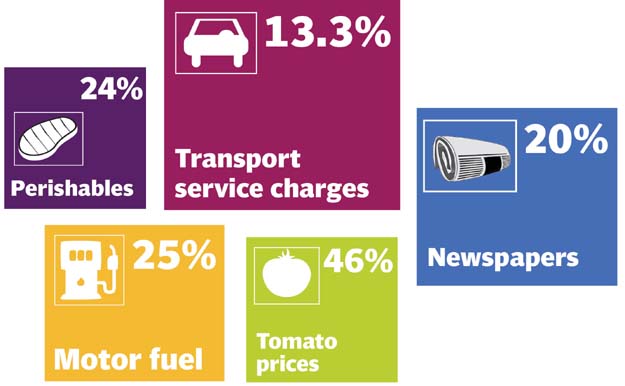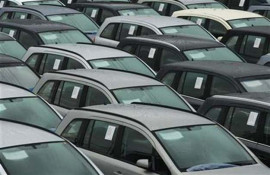
Core inflation - non-food and non-energy price index - which in April stood at 7% also marginally increased to 7.2% last month, reported the PBS on Monday. The headline as well as core inflation in May was largely in line with government’s expectations. Core inflation, on a month-on-month basis, increased by 0.4 percentage point but the pace was slower than the preceding month, stated the national data collecting agency. The SBP takes monetary policy decisions on the basis of year-on-year core inflation reading. It raised the key discount rate to 12.25% with effect from May 21. However, some saw the decision untimely and apparently taken under the IMF influence.
After the last discount rate hike, the central bank has cumulatively increased the interest rate by 6.5% since January last year aimed at curtailing aggregate demand in the economy. Core inflation-adjusted interest rate is now positive by 5%, which is providing windfall gains to bankers who receive handsome return on borrowing by the government as well as private sector. In May last year, the core inflation rate was 7% and the discount rate was 6%. The core inflation remained almost at the previous year’s level this May, but the interest rate has more than doubled, which puts a question mark over independence of the central bank.

TRIBUNE CREATIVE
The central bank’s decision to hike the interest rate has also put an extra burden on the exchequer due to the increasing cost of debt servicing, which is now eating up nearly 40% of the total budget. The high interest rate has also made private sector borrowing expensive, which will have adverse implications for job creation.
The IMF has long been pressing Pakistan to increase its interest rate to over 14% to curb inflation, which the fund believes will be in double digits due to currency depreciation and the possibility of imposition of more taxes. The IMF has been advocating tight monetary and fiscal policies to cut aggregate demand aimed at restoring macroeconomic stability in Pakistan.
Average inflation in first 11 months (July-May) of the current fiscal year rose 7.2% over the same period of last fiscal year. The average inflation is above the government’s annual target but is close to the range given by the central bank. The government is expected to increase prices of gas, electricity, fuel and impose new taxes from July, which could push the inflation rate into double digits.
The PBS bulletin showed that gas prices in May were higher by 85.3% as compared to the previous year. Similarly, the motor fuel was expensive by one-fourth followed by nearly 20% increase in the cost of newspapers. Transport fares increased over 13.3% in May over a year ago due to the hike in fuel prices.
Motor vehicle prices surged 12.7%, kerosene oil nearly 12% and utensils over 11% last month. In the food group, onion prices surged 77% in May followed by 46% increase in prices of tomatoes, 33.7% in moong pulse, over 26.5% in sugar and nearly 20% in vegetables.
Overall, prices of the housing, water, electricity and gas group increased about 10% in May over a year ago. The group has 29.4% weight in the overall inflation basket.
The perishable food group saw a surge of 24%, transport group fares on an average increased 16.7% on the back of a hike in fuel prices.
Published in The Express Tribune, June 4th, 2019.
Like Business on Facebook, follow @TribuneBiz on Twitter to stay informed and join in the conversation.


















COMMENTS
Comments are moderated and generally will be posted if they are on-topic and not abusive.
For more information, please see our Comments FAQ